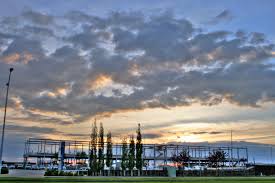Key Elements for Creating a Successful Industrial Park
Industrial parks serve as catalysts for economic growth, attracting businesses, fostering innovation, and driving regional development. Creating a successful industrial park requires careful planning, strategic design, and the integration of essential elements. Industrial park design forms the foundation for its success. The layout, infrastructure, and amenities must be designed to meet the specific needs of businesses and promote operational efficiency.
An effective design includes strategically planned industrial plots, well-designed road networks, adequate utilities, and advanced communication systems. Green areas, waste management facilities, and sustainable practices are additional factors that go into creating an industrial park that prioritizes the health of its residents and the environment.
Location and
Accessibility
Choosing the right location is paramount for an industrial park's success. Additionally, proximity to urban centers, markets, and skilled labor pools enhances the park's attractiveness to businesses. The SMIP, situated in Chennai, India, benefits from its strategic location near major transportation hubs and a skilled workforce. The park's accessibility contributes to its success in attracting global businesses and fostering seamless connectivity.
Infrastructure
and Utilities
The availability of quality infrastructure and utilities is essential for industrial park success. Industrial parks must have a robust and reliable power supply, water management systems, telecommunications infrastructure, and waste management facilities. These essential utilities provide businesses with the necessary resources to operate efficiently and foster growth.
Zoning and Flexibility
Zoning regulations play a vital role in
industrial park creation. Careful zoning allows for a harmonious coexistence of
various industries and ensures compatibility with environmental norms. An
effective zoning plan includes designated areas for manufacturing, warehousing,
research and development, and office spaces.
Supportive
Business Environment
Creating a supportive business environment is critical for industrial park success. This includes establishing a streamlined regulatory framework, facilitating ease of doing business, and providing support services for businesses. The Indian government has implemented policies and initiatives to encourage industrial park development, attracting foreign direct investment and fostering entrepreneurship. SMIP benefits from such a supportive environment, with streamlined regulatory processes and a dedicated support ecosystem that includes business development services, networking opportunities, and access to financial support and incentives.
Collaboration and
Networking
Promoting collaboration and networking among businesses within the industrial park is key to unlocking synergies and fostering innovation. SMIP facilitates collaboration through networking events, shared spaces, and common facilities. This collaborative environment nurtures partnerships and promotes a sense of community, further enhancing the success of the industrial park.
Creating a successful industrial park
requires careful consideration of various elements, including design, location,
infrastructure, supportive policies, and a collaborative business environment.
Sojitz Motherson Industrial Park inIndia serves as a shining example, showcasing the significance of these
elements in driving industrial growth, attracting global businesses, and
fostering a sustainable ecosystem for economic development.



Comments
Post a Comment